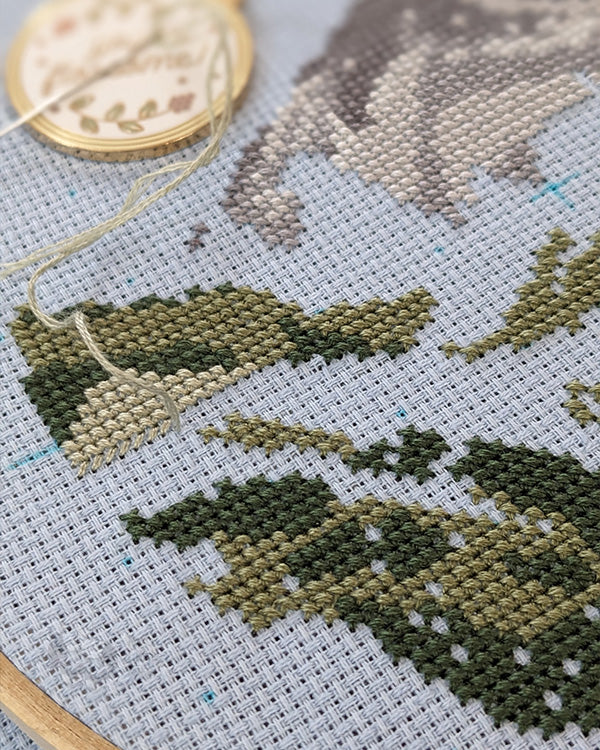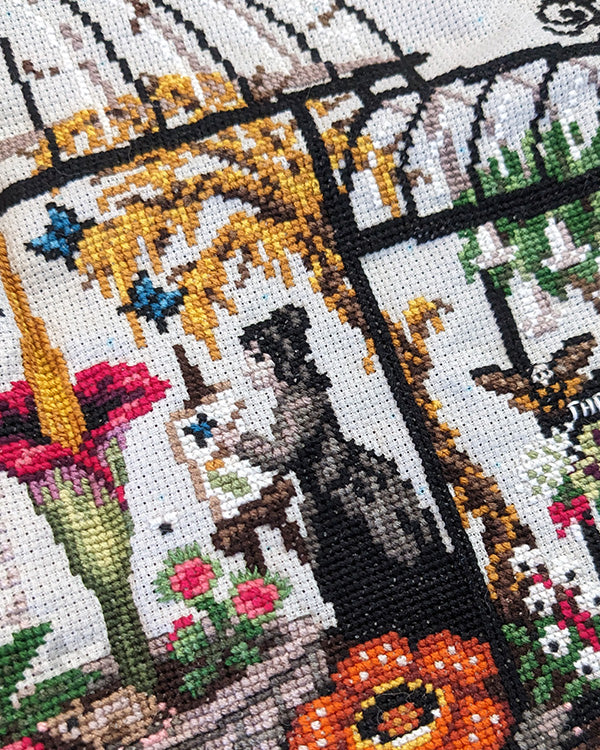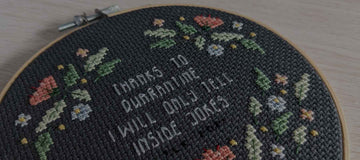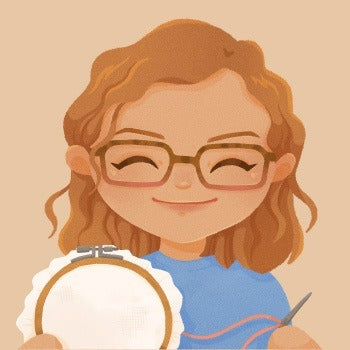Section by Section or Colour by Colour? Weighing the Pros and Cons of Cross-Stitching Techniques.
Embarking on a cross-stitch project is akin to setting out on a creative expedition. Every stitcher has their unique approach to this time-honored craft, with techniques that cater to their style and preferences. One of the pivotal decisions a crafter faces is whether to tackle a project by colour or by section. In this blog post, I'll explore the nuances of these methods, drawing on insights from how I started stitching as well as my own learned behaviours. Let's unravel the threads of these techniques to help you choose the best path for your first (or next!) stitching adventure.
Stitching by Colour.
Many stitchers swear by the colour-block approach, where one thread colour is used at a time until all instances of that hue are stitched. This method is straightforward and can be incredibly satisfying as you watch each colour come to life on the canvas.
This is how I personally stitch all my cross-stitching pieces and I definitely recommend it, especially for beginners to the craft. It helps you find your placing of the on the fabric quickly as well as saves time from having to re-thread your needle constantly.
Pros:
- Efficiency: Focusing on one colour at a time can streamline the stitching process, as you're not constantly changing threads.
- Thread Management: By reducing the number of thread changes, you minimize the risk of tangling behind your work and can better manage your thread supply.
- Colour Progression: Witnessing a single colour fill the design offers a sense of accomplishment, encouraging you to continue with the project.
Cons:
-
Thread Waste: Covering large sections with one colour could lead to higher thread consumption, as you carry the thread across the fabric.
I personally believe that unless you're carrying your thread over six or fewer squares, you should not carry your thread over long distances as you can pull fibres through to the front of your work. -
Eye Strain: Working with similar colours for extended periods can strain the eyes, especially under suboptimal lighting conditions.
Using proper lighting is definitely a must for this craft but seeing the same colour everywhere could cause eye-strain. -
Monotony: Repeating the same colour might become monotonous, potentially diminishing the joy of the crafting experience.
You definitely do not want to find cross-stitch boring, just because you are sick and tired of stitching with the same colour! You can always take a break from the first colour and stitch a bit of a second, before going back to the first.

Stitching by Section.
Alternatively, completing a cross-stitch project section by section involves working on a confined area of the pattern, regardless of colour changes. This method mirrors painting by numbers and can create a sense of discovery with each square inch completed.
I personally don't normally do this as I enjoy watching the entire piece slowly fill out and "make sense" over time. The only time I do this is when I am following a stitch-along as it progresses. But I know of stitchers who prefer this way of cross-stitching! Especially people who do the 'Parking' method of stitching.
Pros:
- Visual Progress: Stitching by section allows you to see a portion of the image emerge, which can be immensely gratifying.
- Colour Variety: Switching between colours within a section keeps the work engaging and can help maintain enthusiasm throughout the stitching process.
- Error Correction: With a more focused approach, identifying and rectifying mistakes becomes easier, ensuring a smoother crafting journey.
Cons:
-
Thread Changes: More frequent thread changes may slow down your rhythm and increase the likelihood of knots and tangles.
To mitigate this in a way, a lot of people who stitch in this method actually load numerous needles with different coloured flosses as that takes one tedious step out of the equation. -
Complex Planning: A section-based approach requires careful planning and organization of threads to ensure all colours are at hand when needed.
No but really; how do they keep track of all those different colours successfully?! -
Higher Skill Level: Newcomers to cross-stitching might find the constant colour switching overwhelming, necessitating a more advanced skill set.
Of course, every person is different though!

Whether you gravitate towards stitching by colour or by section, each method offers a distinct experience catered to different preferences and skill levels. As I have always said though, the most important aspect is to find joy in every stitch. Taking into account factors like thread management, visual satisfaction, and skill requirements, you can choose the approach that aligns with your stitching goals.
Because ultimately; you want to enjoy the process of cross-stitching!
May your thread always be knot-free, and your stitches tell a story of creativity and craftsmanship!
Leading image: "Inside Jokes" cross-stitch pattern piece.





